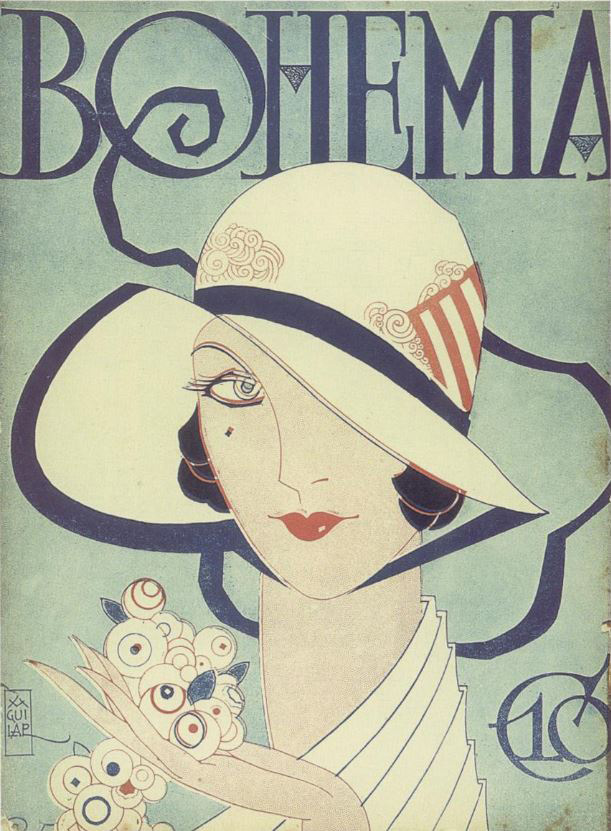The modern lenguaje in cuban graphics.
##plugins.themes.bootstrap3.article.main##
Abstract
During the first two decades of the twentieth century, even when avant-gar-de Cuban painters had not exhibited in national territory, graphic art in Cuba already used modern languages, given, among other things, by the angular compositions inherited from Art Deco and the debts to Cubism. , fundamentally Figures such as Jaime Valls, Conrado Massaguer and Enrique García Cabrera showed their advertisements and illustrations with modernizing vein in magazines such as Social, Posters and Bohemia, at the same level of the well known Vanity Fair or Vogue.
Contradictorily, despite the richness of its legacy, there are only few re-searches and publications that have shown interest in the period and focus on Visual Communication Design.
The objective of this work has a cognitive as well as a utilitarian purpose in the project sphere; and intends as a result, to motivate students and contemporary designers to approach their roots, to those passages of our graphics that wait to be told.
##plugins.themes.bootstrap3.article.details##

This work is licensed under a Creative Commons Attribution-NonCommercial-ShareAlike 4.0 International License.
- Attribution — You must give appropriate credit , provide a link to the license, and indicate if changes were made . You may do so in any reasonable manner, but not in any way that suggests the licensor endorses you or your use.
- NonCommercial — You may not use the material for commercial purposes .
- No additional restrictions — You may not apply legal terms or technological measures that legally restrict others from doing anything the license permits.
- ShareAlike — If you remix, transform, or build upon the material, you must distribute your contribution under the same license as the original. NOTE: This point applies to numbers 1 to 20 of the magazine with the previous CC-BY-NC-SA 4.0 license. Does not apply to the new CC BY-NC 4.0 license from Volume 11, Number. 21 (2024).
References
BERMÚDEZ, J. (2000). La imagen constante. El cartel cubano del siglo XX. Letras Cubanas. La Habana.
FAGIUOLI, M. (2003). Habana Decó. Eurolitho S.p.A. Florencia, Italia.
JUAN, A. (2002) “La belleza de todos los días”. En Pintura cubana: Temas y variaciones. UNEAC, Ciudad de la Habana, 1978, reimpresión Editorial Félix Varela, p. 176-193.
LÓPEZ, F. (2011) ¿Y tu abuelo dónde está? Antecedentes del cartel actual. En: Noticias de Arte Cubano, No.7 año 12, Sello Arte Cubano, Ediciones del Consejo Nacional de las Artes Plásticas. La Habana.
MERINO, L. (2003) Nueva imagen desde la cotidianidad. En: Rev. Arte Cubano. Arte Cubano Ediciones, No.3 año 9. La Habana.
.(2013) Les premiéres revues et affiches publicitaires. En: Cuba Gráfica. Éditions L´échappée, Francia.
SIGARROA, O. Y MENÉNDEZ, J. (2016). Enrique García
Cabrera. Fundación Arte Cubano, España.
VILLAVERDE, H. (2010) Testimonios del Diseño Gráfico Cubano 1959-1974. Ediciones La Memoria. Centro Cultural Pablo de la Torriente Brau, La Habana, Cuba.






















